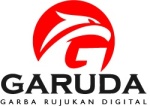Economic Feasibility Analysis Based on Optimal Cash Flow Planning on the A. Road Construction Project
DOI:
https://doi.org/10.26905/cjce.v3i1.13101Keywords:
Cash Flow, Float Time, NPV, BCR, ROIAbstract
Capital resources play an important role in a project. The optimization of working capital effectively and efficiently can have a major effect on achieving the maximum profit value for the contractor. Therefore, controlling cash flow is very important. One alternative that can be used to obtain maximum profit is the right scheduling. This study aims to plan scheduling optimally using the Ms.Poject ap`plication by utilizing float time. Where the utilization of float time uses a scheme with 25% down payment and without down payment. The float time variations used are 0%, 50% and 100%. An economic feasibility analysis was conducted to review the NPV, BCR, and ROI values. From the analysis results, the greatest profitability was obtained in the alternative without a down payment using 100% float. With an NPV value of Rp16,164,849,630, BCR value of 1.0651, and ROI value of 6.51%. It can be concluded that this alternative has maximum profitability.Downloads
References
Amrizal, & Lisra, J. (2015). Kajian Kelayakan Ekonomi Pembanguna Jembatan Layang Simpang Selayang Kota Medan. Jurnal Teknik Sipil Unaya, 1(1), 29–34.
https://doi.org/10.30601/jtsu.v1i1.3
Fadli, A. A. Y. (2017). Analisis pengaruh Return On Investmen (ROI) dan Debt Equity Ratio (DER) terhadap Deviden Payout Ratio (DPR) pada PT. Hanjaya Mandala Sampoerna, TBK periode 2011-2015. Jiep, 17(1), 61–70.
https://doi.org/https://doi.org/10.20961/jiep.v17i1.8508
Giatman, M. (2011). Ekonomi Teknik. PT Raja Grafindo Persada.
http://repository.unp.ac.id/15871/1/Ekonomi-Teknik- Giatman-r.pdf
Khairinisa, R., Putra, I. N. D. P., & Rumintang, A. (2020). Analisis Pembiayaan Investasi Pada Pembangunan Perumahan Taman Karangbahagia Tahap 1 Kabupaten Bekasi, Jawa Barat. Paduraksa: Jurnal Teknik Sipil Universitas Warmadewa, 9, 1–10.
Pradnyawati, P. M. D., Sudiarsa, M., & Pertiwi, I. G. A. I. M. (2020). Analisis Optimalisasi Cash Flow Terhadap Kebutuhan Modal Kerja Dan Tingkat Profitabilitas (Studi Kasus Proyek Pembangunan Gedung Kantor Dinas DIKPORA Kota Denpasar). Prosiding Seminar Nasional Ketekniksipilan Bidang Vokasional, 1–6.
https://ojs.pnb.ac.id/index.php/Proceedings/article/view/1671
Siswanto, A. H., & Sofjan, S. (2013). Perbandingan Hukum Antara Perjanjian Garansi (Indemnity) Dengan Perjanjian Penanggungan Hutang Ditinjau Dari Konsep Hukum Dan Pelaksanaannya. Lex Jurnalica, 10(9).
https://ejurnal.esaunggul.ac.id/index.php/Lex/article/view/365/334
Sugiyanto. (2020). Manajemen Pengendalian Proyek. Deepublish.
http://43ce02b36ccf.sn.mynetname.net:8080/61/1/Buku Manajemen Pengendalian Proyek_compressed.pdf
Sulistyantoro, T. N., Nugraheni, F., & A. Faisol M. (2017). Pemanfaatan Pendanaan Dari Bank Syariah Untuk Analisis Perencanaan Cash Flow Optimal Pada Proyek Konstruksi. Seminar Nasional Sains Dan Teknologi, 1–10.
https://jurnal.umj.ac.id/index.php/semnastek/article/view/1812
Widiasanti, I., & Lenggogeni. (2013). Manajemen Konstruksi. PT Remaja Rosdakarya. https://ebooktekniksipil.files.wordpress.com/2014/05/1714_manajemen-konstruksi.pdf
Wirahman W, L., Warka, I. G. P., & Apriliana, A. (2015). Pengaruh Sistem Pembayaran Terhadap Cash Flow Optimal Pada Proyek Pembangunan Gedung Pengadilan Negeri Praya. Spektrum Sipil, 2, 1–13.
https://spektrum.unram.ac.id/index.php/Spektrum/article/view/30
Yulinda, I., Chandrarin, G., Subiyantoro, E., & Abdillah, P. (2022). Cash Flow Capability Analysis Predicting Company Financial Performance During Covid 19 Pandemic (Empirical Study of Sector Companies Food and Beverages in Indonesia. 7th ICGSS Sustainable Innovation Legal Policy, Alternative Technology and Green Economy. https://www.jurnal.unmer.ac.id/index.php/icgss/article/view/9276%0Ahttps://www.jurnal.unmer.ac.id/index.php/icgss/article/download/9276/4370
Zainuri. (2021). Ekonomi Teknik. CV Jasa Surya. https://repository.unilak.ac.id/2627/1/Buku Ekonomi Teknik.pdf
Downloads
Published
How to Cite
Issue
Section
License
The copyright of the received article shall be assigned to the journal as the publisher of the journal. The intended copyright includes the right to publish the article in various forms (including reprints). The journal maintains the publishing rights to the published articles.

This work is licensed under a Creative Commons Attribution-ShareAlike 4.0 International License.









